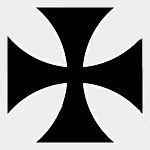Corgi AA37811 German Albatros D.V Fighter - 2263/17, Otto Kissenberth, Jasta 23, Puxieux, France, August 1917 (1:48 Scale)
"When you march into France, let the last man on the right brush the Channel with his sleeve."
- General Alfred von Schlieffen, referring to the Schlieffen Plan just prior to his death in 1913
 The Albatros D.V was a German fighter airplane used during World War I. In April 1917, Albatros received an order from the Idflieg (Inspektion der Fliegertruppen) for an improved version of the D.III. The resulting D.V featured a new fuselage with an elliptical cross-section. The flat fuselage sides of the D.III were eliminated. The D.V also used the enlarged rudder of the Ostdeutsche Albatros Werke (OAW) D.III. The upper wing was repositioned 4 inches closer to the fuselage, while the lower wings attached to the fuselage without a fairing. The wings themselves were similar to those of the standard D.III, except for a revised linkage of the aileron cables. Early examples of the D.V featured a large headrest, which was typically removed by pilots because it obstructed the field of view. Aircraft deployed in Palestine used two wing radiators to cope with the warmer climate.
The Albatros D.V was a German fighter airplane used during World War I. In April 1917, Albatros received an order from the Idflieg (Inspektion der Fliegertruppen) for an improved version of the D.III. The resulting D.V featured a new fuselage with an elliptical cross-section. The flat fuselage sides of the D.III were eliminated. The D.V also used the enlarged rudder of the Ostdeutsche Albatros Werke (OAW) D.III. The upper wing was repositioned 4 inches closer to the fuselage, while the lower wings attached to the fuselage without a fairing. The wings themselves were similar to those of the standard D.III, except for a revised linkage of the aileron cables. Early examples of the D.V featured a large headrest, which was typically removed by pilots because it obstructed the field of view. Aircraft deployed in Palestine used two wing radiators to cope with the warmer climate.
The D.V entered service in May 1917 and, like the preceding D.III, immediately began experiencing structural failures of the lower wing. Indeed, anecdotal evidence suggests that the D.V was even more prone to wing failures than the D.III. Furthermore, the D.V offered very little improvement in performance. This caused considerable dismay among frontline pilots. Manfred von Richthofen denounced the D.V as "obsolete" and "ridiculously inferior" to Allied scouts such as the Camel and S.E.5a. Nevertheless, 400 D.Vs were ordered in May and 300 more in July.
In October 1917, production switched to the D.Va, which reverted to the D.III's aileron cable linkage to provide a more positive control response. The wings of the D.III and D.Va were in fact interchangeable. In an effort to resolve continuing problems with wing flutter, the D.Va also featured a metal sleeve to strengthen the lower main spar, as well as a small brace connecting the interplane struts to the leading edge of the lower wing. These modifications increased weight while failing to cure the flutter problem.
While most D.V aircraft were equipped with the 170 hp Mercedes D.IIIa, late D.V and almost all D.Va aircraft used the high-compression 180 hp Mercedes D.IIIa.
The D.Va was the final development of the Albatros D.I family, and the last Albatros fighter to see operational service during World War I. Despite its well-known shortcomings and general obsolescence, Albatros and OAW produced approximately 900 D.V and 1,612 D.Va aircraft. Service numbers peaked in May 1918; 131 D.V aircraft and 928 D.Va were on the Western Front at that time. Numbers declined as production ended and the superlative Fokker D.VII entered service, but the D.Va remained in widespread use until the Armistice.
Pictured here is a 1:48 scale replica of a German Albatros D.Va fighter that was piloted by Otto Kissenberth, who was attached to Jasta 23, then deployed to Puxieux, France, during August 1917.
Sold Out!
Dimensions:
Length: 6-inches
Wingspan: 7-1/2-inches
Release Date: January 2023
Historical Account: "Otto" - Great War German fighter ace Otto Kissenberth has been described as being something of a character, brave and tenacious in the air, but a fighter pilot with a rather unusual trait - he flew combat missions while wearing his spectacles, something only two other Luftstreitkrafte fighter aces were known to have done. Given command of Royal Bavarian Jasta 23 at the beginning of August 1917, Kissenberth would continue his association with the Albatros D series of fighters and in particular, aircraft serial number D2263/17, a machine in which it is thought he would go on to score the majority of his 20 aerial victories. As his personal aircraft, it was distinctive by virtue of its smart black fuselage and the large yellow and white Edelweiss emblem it sported on either side of the fuselage, just behind the cockpit. Further adding to the fascinating story of this particular Great War Albatros ace, Kissenberth would claim a British RNAS Sopwith Camel for himself, an aircraft which had been forced down intact by another one of his unit's pilots. Overpainting the aircraft's British insignia with new, highly visible German markings (for obvious reasons), he apparently flew the aircraft on many occasions and incredibly, used this captured aircraft to score the last of his 20 victories on May 16th, 1918, when he used it to bring down a British SE5a fighter near the town of Tilly-Neuville.


